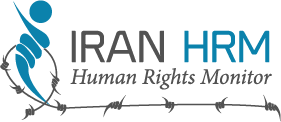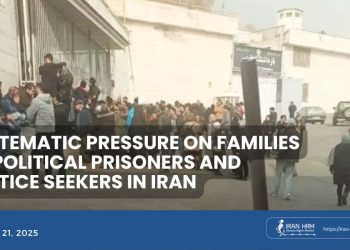Introduction
Free and equal education is a fundamental human right, recognized in Article 26 of the Universal Declaration of Human Rights and enshrined in international covenants. Education is not only a tool for individual and social development but also a cornerstone for democracy and sustainable progress. Yet in Iran, under the rule of the mullahs, this essential right is systematically violated.
This report, published on 15 September 2025, National Online Learning Day, highlights how the regime suppresses educational freedom through three principal mechanisms:
- Suppression of academic freedom and student movements
- Institutionalized gender discrimination in education
- Censorship and filtering of scientific and educational resources
Section I: Suppression of Thought and Academic Space
Instead of serving as a haven for free expression and critical inquiry, universities in Iran have been transformed into centers of political and security control.
- During the nationwide protests in 2022, universities became focal points of demonstrations. According to official university disciplinary records and domestic media, hundreds of students were suspended or expelled. At least 804 students were arrested, 147 were banned from education, and many others faced disciplinary action.
- The phenomenon of faculty purges has intensified in recent years. Ahmad Naderi, a member of the parliament’s presidium, described dismissals as “natural” and based on “academic shortcomings.” Mohammad Khalaj Amirhosseini, head of the Ministry of Science’s faculty recruitment center, called them “rare” and related to “ethical issues.”
(Sources: IRNA, ISNA) - However, testimonies from dismissed professors and academic associations confirm that the primary reasons were political and security-related, with bodies such as the Supreme National Security Council and the Ministry of Interior involved.
This contradiction reveals a process of political cleansing disguised as academic or ethical justification, threatening the independence of universities.
Long-Term Consequences
- Expansion of self-censorship in academic settings
- Decline in the quality of teaching and research due to the removal of critical faculty
- Intensification of brain drain and academic isolation
- Transformation of universities into instruments of the security apparatus rather than civil institutions of thought and innovation
Section II: Gender Discrimination
Gender-based discrimination in Iran’s education system is structural and long-standing.
- In 2012, according to the U.S. Department of State and the International Council for Science, 36 universities barred women from 77 academic fields, including engineering, basic sciences, and even some social sciences.
- Ebrahim Khodaei, then-head of the National Organization of Educational Testing, denied such discrimination in an interview with IRNA and pointed to women’s 53% share in university admissions, non-official reports indicate that restrictions continue in hidden and informal forms.
- According to the Statistical Center of Iran, in one academic year, out of 197,690 students who dropped out of school, more than 72,731 were girls.
These discriminatory practices exclude women from high-value disciplines and professions, restricting their real participation in society despite their achievements in admissions.
Section III: Digital Censorship and Denial of Knowledge Resources
In today’s world, access to the internet and online knowledge is inseparable from education. Yet the Iranian regime has constructed a “digital wall” through extensive filtering.
- Iran is listed among the most restrictive countries in terms of internet freedom in Freedom House 2024.
- Domestic surveys show that over 97% of teenagers aged 15–17 and 63% of children under 13 use VPNs to access educational resources.
- Mehdi Fakour, Deputy for Research at the University of Tehran, admitted that the university lost access to international academic databases due to a 60 billion toman debt. (Source: Mehr News Agency)
- Mohammad Hassanzadeh, head of the Iranian Research Institute for Information Science and Technology, acknowledged that the high costs of subscriptions have deprived many universities and researchers of access to essential databases. (Source: ISNA)
These policies degrade the quality of education, deepen inequality, and accelerate the migration of skilled professionals.
Section IV: Interconnected Mechanisms of Control
Suppression of thought, gender discrimination, and digital censorship do not operate in isolation; they reinforce each other as part of a comprehensive system of control.
- Political repression of students is often facilitated through digital monitoring and internet restrictions.
- Many victims of university repression are women’s rights activists, facing double layers of discrimination.
- This overlap of repression undermines innovation, erodes public trust, and entrenches intellectual isolation across society.
Legal Analysis
The regime’s policies represent clear violations of its international obligations:
- Article 26, Universal Declaration of Human Rights (UDHR): Right to free and equal education
- Articles 13 & 14, International Covenant on Economic, Social and Cultural Rights (ICESCR): Right to education and academic freedom
- Articles 18 & 19, International Covenant on Civil and Political Rights (ICCPR): Freedom of thought and expression
- Convention on the Elimination of All Forms of Discrimination Against Women (CEDAW): Gender-based discrimination in education
- Rome Statute, ICC (Article 7): Systematic persecution of students and professors may constitute crimes against humanity
Conclusion and Call to Action
The denial of free education in Iran is part of a comprehensive system of control built upon suppression of thought, gender apartheid, and digital censorship. The consequences are devastating: destruction of academic independence, exclusion of women, brain drain, and the silencing of a new generation.
We call on the international community to take urgent measures:
- The UN Human Rights Council and UNESCO must launch independent investigations into the violations of the right to education in Iran.
- Universities and international academic institutions should expand scholarships and educational opportunities for banned and exiled Iranian students.
- Human rights organizations must continue documenting and publicizing these violations to raise global awareness.
- Technology and digital rights organizations should facilitate secure access to online academic resources for Iranian youth.
The struggle for free education in Iran is inseparable from the struggle for a free, equal, and democratic future.







